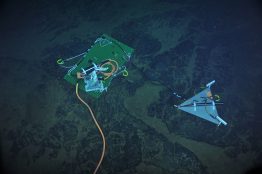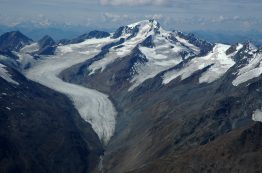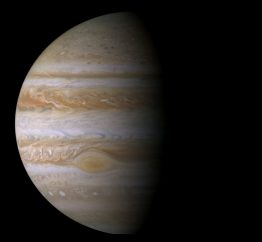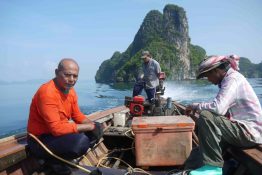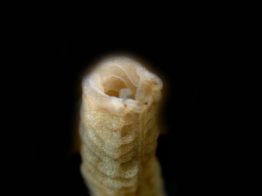The cracking, bulging and shaking from the eruption of a mile-high volcano where two tectonic plates separate has been captured in more detail than ever before. A University of Washington study published this week shows how the volcano behaved during its spring 2015 eruption, revealing new clues about the behavior of volcanoes where two ocean plates are moving apart. “The new network allowed us to see in incredible detail where the faults are, and which were active during the eruption,” said lead author William Wilcock, a UW professor of oceanography.
Read more at UW Today »Mountain glaciers are showing some of the strongest responses to climate change
A new study analyzing 37 glaciers around the world shows that because of their decades-long response times, glaciers are among the purest signals of human-driven climate change.
Read more at UW Today »Wildfires, lake trout and more
Every other week we share the latest peer-reviewed publications coming from the College of the Environment. Over the past two weeks, eight new articles co-authored by members of the College were added to the Web of Science database. They include articles about wildfires, lake trout and more. Read on!
Read more »Put people at the center of conservation, new study advises
People must be part of the equation when it comes to conservation projects in order to increase local support and the overall effectiveness of the conservation efforts. That’s the main conclusion of a study published online on Nov. 29 in Biological Conservation. In it, a group of scientists from around the world recognize the need to consider the livelihoods of humans, their cultural traditions and dependence on natural resources when planning and carrying out conservation around the world.
Read more at UW Today »Our closest worm kin regrow body parts, raising hopes of regeneration in humans
What if humans could regrow an amputated arm or leg, or completely restore nervous system function after a spinal cord injury? A new study of one of our closest invertebrate relatives, the acorn worm, reveals that this feat might one day be possible. Acorn worms burrow in the sand around coral reefs, but their ancestral relationship to chordates means they have a genetic makeup and body plan surprisingly similar to ours.
Read more at UW Today »
